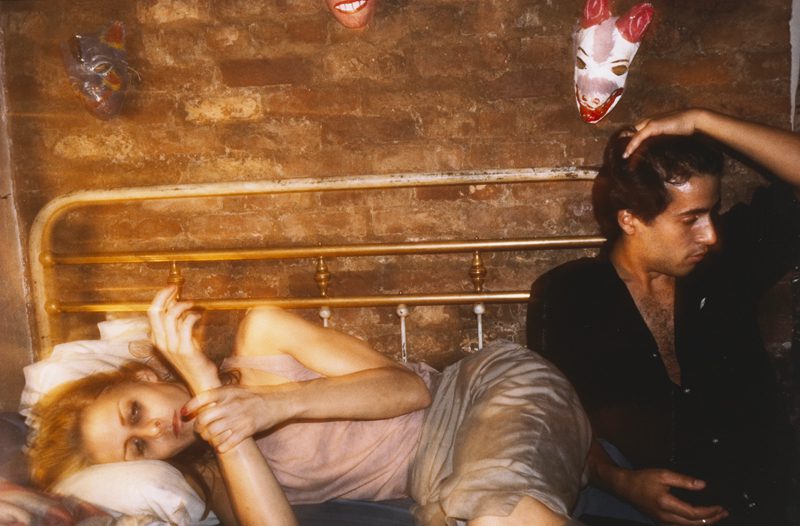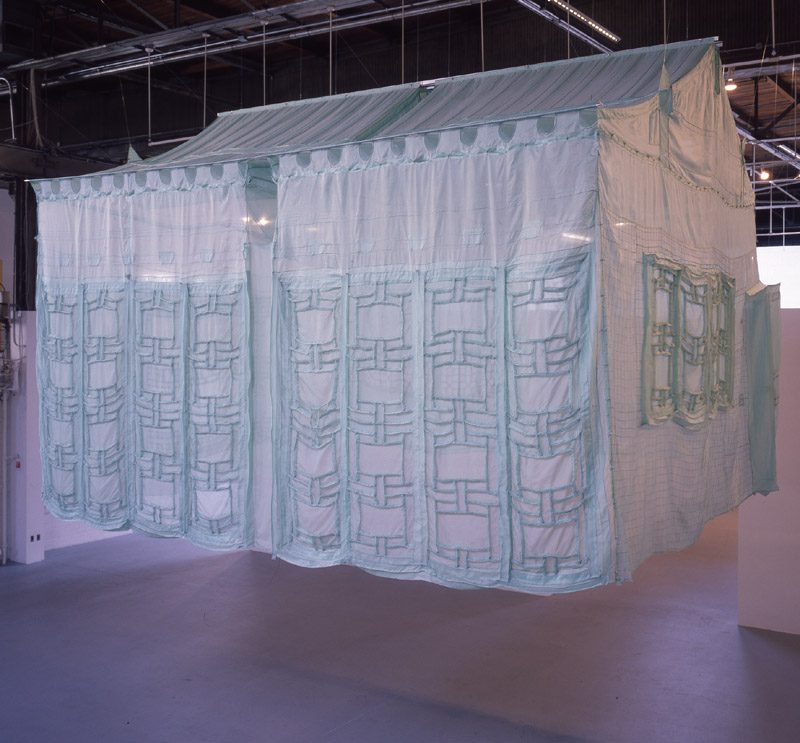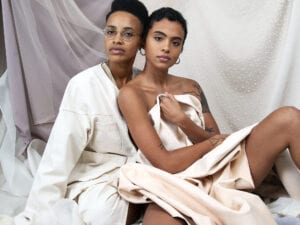In 1995, artist Jim Hodges produced A Diary of Flowers – Above the Clouds, an installation of one hundred flower drawings, made from ballpoint ink on paper napkins. The fragile materials, and the short-lived blossoms he replicated were a reflection of the AIDS epidemic that devastated LGBTQIA+ people throughout the 1980s and 1990s. The piece is an emblematic of how creatives use art to respond to lived realities, communities and relationships. Now, an exhibition at the Museum of Contemporary Art (MOCA) takes its name from Hodges’ work. Diary of Flowers: Artists and Their Worlds explores how artists use the imagination to collaborate with fellow artists and wider society, realise new possibilities and offer audiences a different perspective on the world. The display brings together more than 80 works from the gallery’s renowned collection, featuring pioneering names like Abraham Cruzvillegas, Annette Messager, Candice Lin, Haegue Yang, Lucas Samaras, Mohammed Sami, Mona Hatoum and Wangechi Mutu.
Diary of Flowers takes visitors on a journey from the micro to the macro, from one individual to whole countries. Split into three distinct sections, MOCA begins with an exploration of renowned photographer Nan Goldin’s work. The artist is known for her raw and sympathetic portraits of LGBTQIA+ groups and is a moving example of how worlds can be opened up when those often overlooked are given the opportunity to be seen. Elsewhere, the Mexico City portion of the show moves artistic collaboration to the fore, bringing to life the vibrant and innovative scene of the 1990s, before shifting to considering an international sharing of ideas. Polish-American Exchange spotlights an unwavering dedication to carving out artistic spaces, even in the face of Cold War existential threats. Clara Ki, Chief Curator, says: “Diary of Flowers provides a glimpse of how artists across different times and geographies respond to the world they live in, demonstrating the power of the imagination to conjure and create new ways of being.”

Nan Goldin is one of the most well-known names in 20th century photography and her iconic images take centre stage in Diary of Flowers. It is a poignant place to start, as her dedication to the LGBTQIA+ subculture in New York meant she often captured the brutal and devastating realities of the AIDS crisis. It is an artistic pursuit that echoes Hodges’, honouring the exhibition’s namesake. MOCA’s collection features a selection from over seven hundred pictures that make up Goldin’s The Ballad of Sexual Dependency. Taken throughout the 1970s and 1980s, these informal, unposed images function much like the artist’s diary, recording moments of love, violence, loss, drug use, sex and joy. The series depicts her chosen family of friends and lovers, and often Goldin herself. Though most of her subjects existed on the fringes of society, in Goldin’s eyes they were never marginalised: “we were the world.” The pictures are startlingly intimate. Some, like one revealing an ectopic pregnancy scar laid bare or Nan After Being Battered (1984), which shows Goldin with significant face brusing, have the disquieting feeling of pain and suffering. Others are gentle in their familiarity, such as Kenny in his room, New York City (1979), which depicts a naked man laid on his front, asleep on the bed. The overwhelming sense, when looking at the collection, is of a photographer who pulled no punches. Goldin’s oeuvre captures universal human experiences, enabling audiences to connect with her deeply personal portraits.

Community engagement comes to the fore in the show’s Mexico City section. MOCA considers how the capital became fertile ground for innovation, experimentation and expression in the 1990s, paving the way for its rise as global artistic destination. On 19 September 1985, the country experienced one of its most devastating earthquakes, seeing hundreds of buildings destroyed and thousands of lives lost. The population struggled to recover and it was exacerbated by economic downturn and severe class divides. Against this backdrop, an artistic renaissance occurred. Kit Hammonds, Curator at Museo Jumex, writes for Aperture: “Among the markers of this shift was the arrival of European artists … who chose Mexico as a place where they could work outside the confines of the established art circuit.” This gets to the heart of MOCA’s presentation – figures crafted a world outside of traditional institutions. These included artist-run spaces, new galleries and self-organised collectives such as Gabriel Orozco’s “Friday Workshops”, which took place each week at his Tlalpan home from 1987 to 1993. The space was attended by young artists of the time, such as Abraham Cruzvillegas, Damián Ortega and Dr. Lakra, now among the leading figures of their generation. Cruzvillegas explained in the exhibition for catalogue for Escultura Social: A New Generation of Art from Mexico City (2007): “We learned together to discuss, criticise, and transform our work individually, with no programmes, marks, exams, diplomas or reprisals.” Works from Cruzvillegas, Ortega and Dr. Lakra are on display at MOCA. Each piece, from Cruzvillegas’ sculptures made from found objects to Ortega’s installations, reflect a desire to reimagine social, urban and artistic boundaries.

MOCA’s focus on artistic dialogues stretches overseas in Polish-American Exchange. In the early 1980s, influential artist Henryk Staźewski initiated the project in conversation with the Artist Advisory Council of the newly formed Museum of Contemporary Art and its first director, Pontus Hultén. Inspired by the internationalist ethos of earlier decades, the exchange aimed to build “channels of communication” across cultural and geographic divides. Works by 15 Polish artists – largely Warsaw-based and associated with the experimental space Foksal Gallery – came into MOCA’s collection, while works by American artists entered the collection of Muzeum Sztuki in Łódź. A key figure in post-war Poland was Andrzej Łobodziński, whose sound pieces were exhibited as part of the Foksal Gallery and the Muzeum Sztuki. His musical installation, HRA (1970) is in MOCA’s collection, gifted as part of the Cultural Exchange. The section lays bare the creative frontiers that can be traversed when groups work together to foster innovation.
Diary of Flowers takes well-established artists and works and re-examines them in fresh and exciting ways. The exhibition is an important reminder that to create art is to take part in a constant process of world-building. Dialogues with friends, family and fellow practitioners, as well as a keen desire to engage with, and often change, the socio-political context of the day, is what makes the production of art such a profound experience. In bringing this to the fore, MOCA offers audiences the unique chance to more intimately know the leading figures who have shaped contemporary art.
Diary of Flowers: Artists and Their Worlds is at Museum of Contemporary Art, Los Angeles until 4 January 2026: moca.org
Words: Emma Jacob
Image credits:
1&4. Nan Goldin (b. 1953, Washington, D.C.; lives in New York). Philippe H. and Suzanne kissing at Euthanasia, New York City, 1981, Cibachrome print. Frame: 17 5/8 x 21 5/8 in. (44.8 x 54.9 cm), 11 x 14 in. (27.9 x 35.6 cm). Image: 9 1/8 x 13 3/4 in. (23.2 x 34.9 cm). The Museum of Contemporary Art, Los Angeles. The Nimoy Family Foundation.
2. Do-Ho Suh (b. 1962, Seoul, Korea; Lives in New York). Seoul Home/L.A. Home/New York Home/Baltimore Home/London Home/Seattle Home/L.A. Home, 1999. Silk and metal armatures 149 x 240 x 240 in. (378.5 x 609.6 x 609.6 cm). The Museum of Contemporary Art, Los Angeles. Purchase with funds provided by an anonymous donor and a gift of the artist.
3. Nan Goldin (b. 1953, Washington, D.C.; lives in New York), Greer and Robert on the bed, New York City, 1982. Cibachrome print. Image: 9 x 13 3/4 in. (22.9 x 34.9 cm). Paper: 10 3/4 x 14 in. (27.31 x 35.56 cm). The Museum of Contemporary Art, Los Angeles. The Nimoy Family Foundation.




